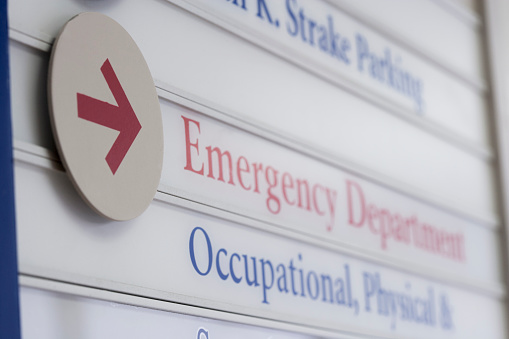Health economists wondered if states that expanded Medicaid coverage to more low-income Americans in 2014 under a new provision in the Affordable Care Act (ACA) would lead to increased wait times in emergency departments. A new Northwestern Medicine study found it did.
Emergency department wait times increased 10% in states that expanded Medicaid coverage compared to states that didn’t, according to the study. It also found a 15% increase in the proportion of patients who left the emergency department without being seen by a doctor, which can lead to patients becoming even sicker down the road.
The findings were published Nov. 4 in the journal Health Services Research. It is the first known study to look at emergency department wait times rather than volume changes following the Medicaid expansion.
Lack of facilities
While the study didn’t examine the “why” behind the increase, lead study author Lindsay Allen hypothesized there may have been an influx of newly insured patients to the emergency department because of a lack of non-urgent health care facilities in low-income areas.
“The ACA’s Medicaid expansion achieved one of its major goals, which was to extend health care coverage to those who were previously uninsured, which is fantastic,” said Allen, an assistant professor of emergency medicine at Northwestern University Feinberg School of Medicine. “However, access to health care relies on much more than just insurance status.
“The problem our findings highlight is that we now need to focus efforts to connect patients to community care, so that they don’t need to rely on the emergency department as often.”
Researchers studied pre-pandemic data from 2012 to 2017, the years surrounding the 2014 Medicaid expansion.
Additionally, emergency-department clinicians may have changed their evaluation and/or treatment practices as a response to the increase in insured patients seeking care, Allen said. This can increase how long it takes for a patient to get evaluated and either discharged or admitted to an inpatient room.
And lastly, Allen said another reason could be boarding — when patients who have been assessed and deemed appropriate for inpatient admission must wait in the emergency department until an inpatient bed becomes available — which is the primary way emergency departments contribute to crowding, Allen said.
“Just as Medicaid expansion might have increased the volume of emergency department visits, it could also have prompted more inpatient use, which in turn, could worsen boarding bottlenecks in the emergency department,” Allen said. “Boarding is a hot-button issue because it’s pretty universally considered one of the biggest problems in causing emergency department crowding.”
Costly ER visits
Allen said more research is needed in this area to continue to uncover exactly where the increase in emergency wait times is coming from so policy can be crafted that reduces costs and improves healthcare access and quality.
“The emergency department is the most expensive outpatient care setting. Everything costs more in the emergency room because it requires keeping all sorts of equipment, specialists, etc., available at all times, which is costly,” Allen said. “So, if we can figure out where bottlenecks are occurring, we could intervene in a way that keeps costs down while improving patient satisfaction.”
Using 2012-2017 hospital-level secondary data from the CMS Hospital Compare data warehouse, the study authors conducted a state-level difference-in-differences analysis to compare outcomes in states that expanded Medicaid to those in states that did not expand Medicaid, before and after the time of the 2014 expansion.


